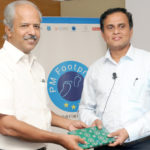Professionals in today’s working world estimate that they spend 40-percent of their workday in meetings. Of those meetings, 71-percent of people say that they are typically a waste of time that could have been handled with an email. This often incudes some sort of painful speech being read directly from a PowerPoint presentation, which inevitably causes the audience to start checking their phones and thinking about the millions of other things they could be doing than sitting there.
As a business professional, how do you keep your audience engaged when they would rather be doing something else?
1. Get their attention from the very start. – Your goal should always be to capture the attention of your audience in the moment that you start talking. After all, people have short attention spans and will very quickly make the decision as to if they are going to listen or totally tune you out. Next time, instead of starting with a formal introduction and purpose, open with something that will grab their focus. For example, try an intriguing story that directly ties into the meeting topic. This will help audience members feel engaged with you on a personal level while relating to your topic.
2. Quit reading from your PowerPoint presentation. – Presenting with a visual presentation is quite a controversial topic in the world of public speaking at the moment. If you choose to use a visual aid or slides, make sure that they are simple and brief. Whatever you do, do not type out all of your presentation information on said slides as your audience cannot listen to you and read at the same time. If a chunk of information must be included, take a brief pause from speaking to allow the audience to absorb the written information before you begin talking about it.
3. Give them something to think about. – Many presenters spend the final moments of their presentation recapping what they have already said instead of giving their audience a piece of information to consider as they walk out. Try sharing an impactful point that will resonate with them long after you have concluded your speech or bookend the speech with the second part of the story that you opened with.
By keeping these tricks in mind and using them when giving your next speech or presentation, you will be able to make your audience actually want to listen and remember what you have to tell them.







Recent Comments